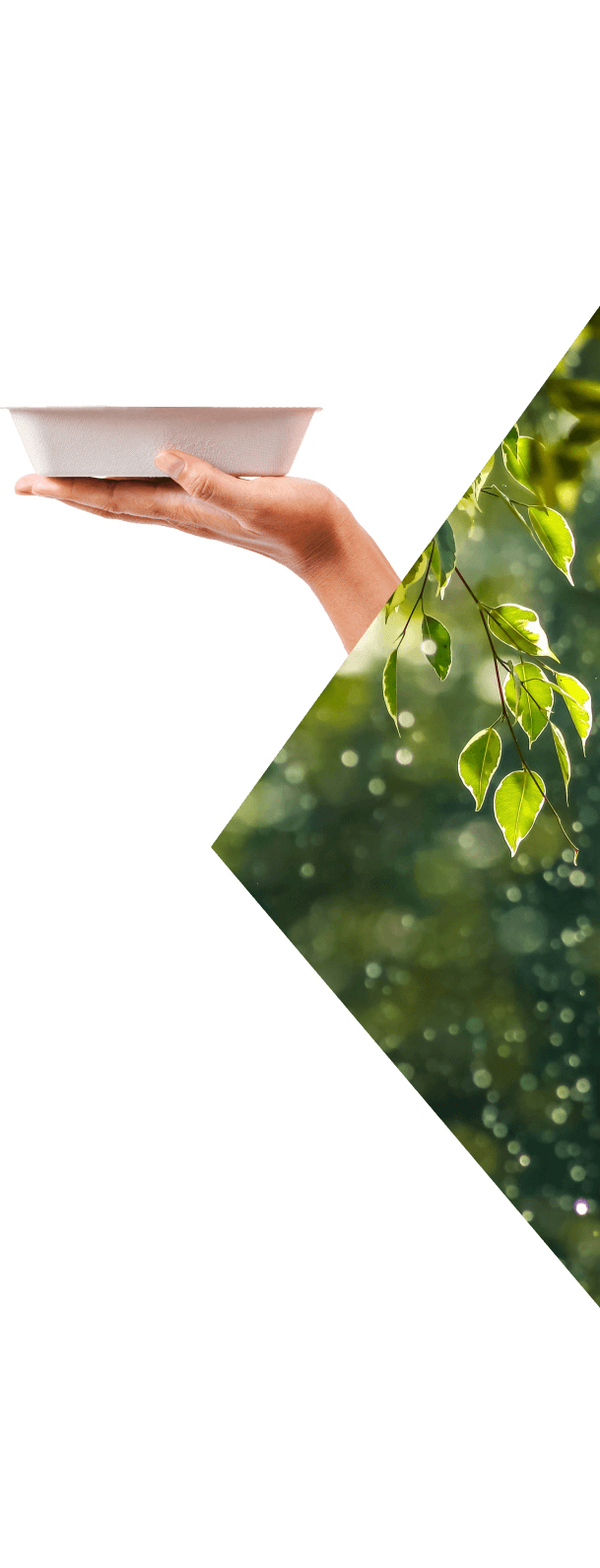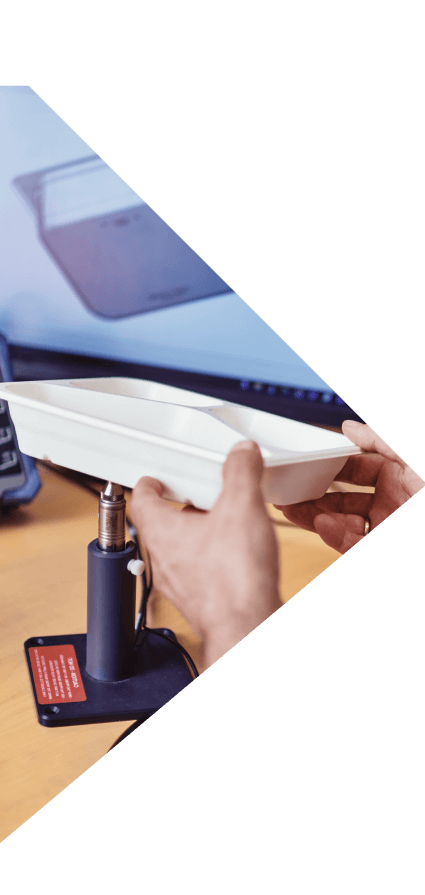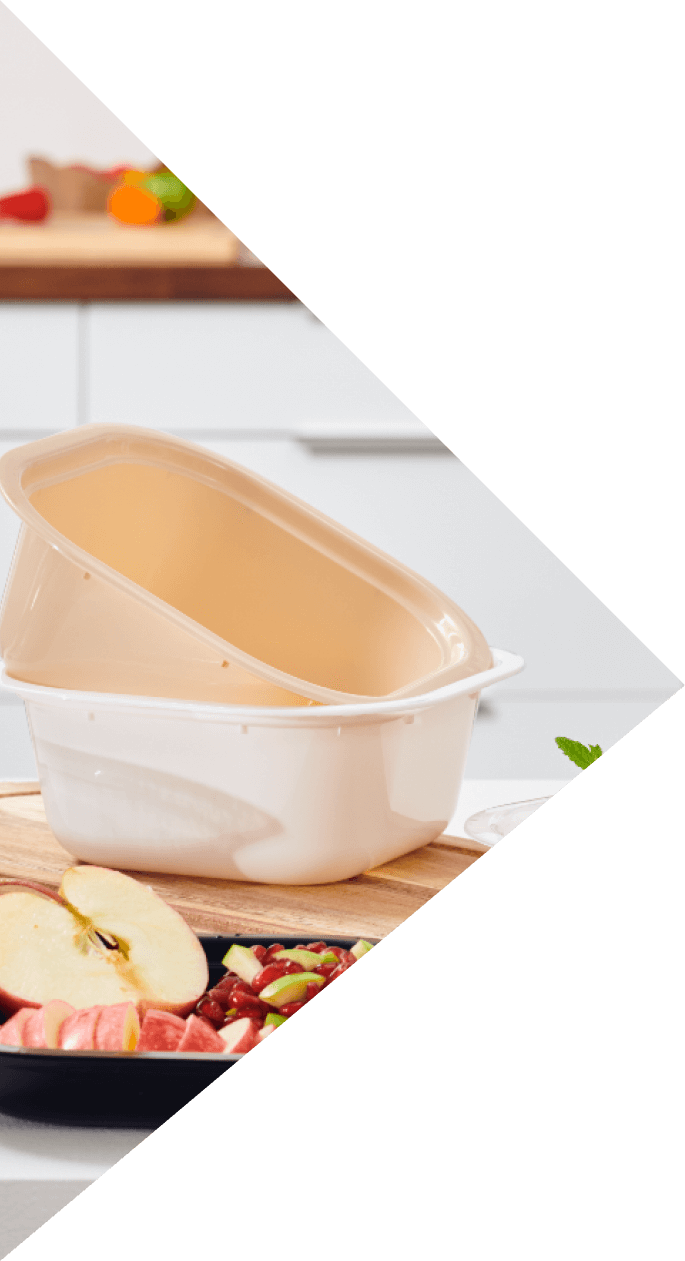Which eco-friendly food packaging solutions should you choose?
The right packaging is the one that does what it needs to do, for you.
We’ll admit that the words “responsible”, “ecological” and “sustainable” sometimes seem hollow. So it’s up to us to make them concrete for you.


Nutripack ecological food packaging
Ecological food packaging
for food processing
To support changes in the food industry and help reduce the carbon footprint of its packaging.
Ecological food packaging
for corporate catering
Sustainable single-use food containers adapted to the constraints of corporate catering? We can do that.

What does environmentally friendly food packaging actually mean?

It's food packaging that is respectful of the environment, of course.
But what does it mean for packaging to be “environmentally friendly”?
Well, it’s simple:
1/ The right packaging is packaging that can be avoided.
But that’s not always possible, especially in the food industry and in corporate catering where certain products would spoil without packaging.
2/ The right packaging minimises the impacts on our ecosystems.
And that’s where things get a bit tricky. Because naturally, you could say that when we consider an aluminium tray, a cardboard tray or a plastic tray, it’s the material that counts.
True, but that’s not enough.
Reducing and minimising the impact of packaging to make it as environmentally friendly as possible means constantly making choices:
Materials choices
Their origin, their method of manufacture or extraction, their proximity to the processing location (e.g., the factory where the pulp becomes a food tray).
How it’s made
Which energy source is used to make your packaging? How much water is consumed? Who makes it and under what conditions? (Because yes, the impact on people matters, too.)

Packaging design choices
A container is never “just” a container. How do we take weight, volume and convenience into account while keeping only what’s necessary and using as little raw material and energy as possible to manufacture it?
Transport choices
The energy cost of shipping packaging once it’s ready, and then there’s the energy cost of storage, too.

Since 2013, the transition to the ultra-thin wall on lighter GN 1/8 trays has saved 100 tonnes of material per year (for 50 million trays).
All these choices have an impact throughout the lifetime of the packaging.
For both single-use and re-usable packaging.
At Nutripack, we have asked ourselves all these questions. And we’re still asking them, to ensure we continue reducing our products’ impact. These questions are at the heart of our CSR approach. And they are your guarantee that your packaging products will be as good for the planet as we can make them.
The right packaging is one that starts a new adventure at the end of its life.
It is a logical continuation, the end of one cycle and the beginning of another: whether it is compostable and destined to become a source of energy, or recyclable and destined to become a raw material for other uses.
But recyclable products don’t make sense if they’re not collected. That’s why Nutripack has developed its own collection and recycling branch for the containers we manufacture and sell. Because we want to be certain that, whatever happens, our products never end up in landfills.
That’s right. Responsible, sustainable and ecological food packaging means all of that.
And at Nutripack, we’re working to do better on each of these points.
So, are you ready to join us to find solutions that are right for you?

All Nutripack single-use food packaging solutions

Can we still use polypropylene (PP) and PET mono-material food containers?
We’ve been using them for a long time, and we think we have to be pragmatic: yes, their is still a need for them. And their biggest advantage is that mono-material PP and PET are 100% recyclable. At the end of its life, through specific recycling, PP and PET packaging can be reinserted entirely in the production cycle to become raw materials used to manufacture other products. But change doesn’t happen in a day. So, the solution we have found is to make every effort ourselves to ensure that these materials actually are recycled. And it works.
But that’s not everything. We also say yes to innovation, with 100% compostable materials.
The first complete line of 100% compostable Gastronorm-certified food containers made of moulded cellulose, a material that we believe in and will continue believing in for years to come.
Cellulose is 100% compostable. Our moulded cellulose containers offer an alternative to plastics. They don’t compromise on quality and their end of life is environmentally friendly, making them a solution for the future that’s available right now.
We’re exploring other solutions too, using biosourced materials
Through partnerships with materials and specific mould manufacturers, Nutripack also offers containers made of biosourced materials, using natural alternatives to plastic.
Where you can find us
Our sites in France
150 route de Lallaing
59148 Flines-lez Râches
France
ZI Kervidanou 2
Lieu-dit La Magdeleine
29300 Mellac
France
32 rue de l’Ancienne Gare
01430 Saint-Martin-Du-Fresne
France
Nutripack in Belgium
Nutripack in United Kingdom
Unit 5 Kingfisher Way
Hemdale Business Park
Nuneaton, Warwickshire CV11 6GY
United Kingdom
Nutripack en Italie
Via Buozzi 26
20097 San Donato Milanese
Italia
Our sites in Spain
Carretera Sant Miquel s/n
Banyeres Del Penedes
43711 Tarragona
España
Our sites in Nederland
Merwedestraat 54
5347 KW Oss
Nederland
Our sites in Deutschland
Guttenhofen 1
94116 Hutthurm
Deutschland
Our sites in Romania
Traian street 113 a
115100 Câmpulung Muscel
Romania



 France
France  Belgium
Belgium  United Kingdom
United Kingdom  Italia
Italia  Spain
Spain  Nederland
Nederland  Deutschland
Deutschland  Romania
Romania